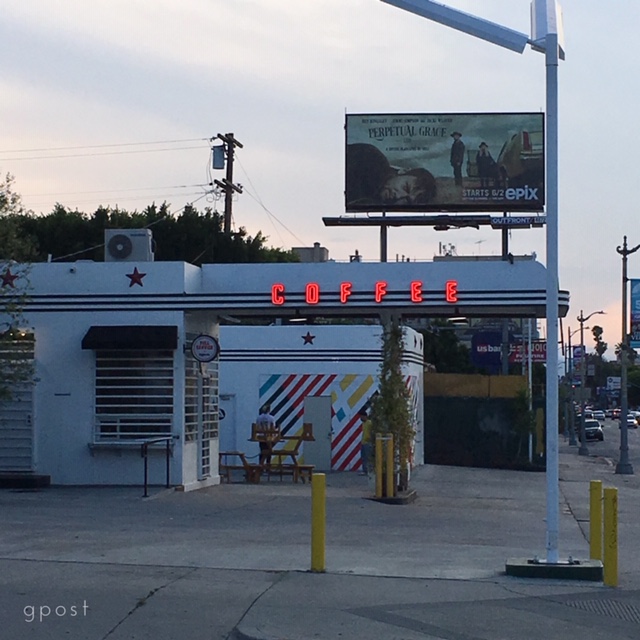
Emily was here for breakfast on Thursday and I had the morning’s news on public radio—the same stories staring at me from the front page of my newspaper—and she said with millennial weariness: Why are you listening to that?
It was a good question, and one I often answer for myself by turning it off because it’s mostly journalist shock, outrage or shame about whatever the newsmakers think is going on. Who needs their sense of urgency in those first moments when you’re still trying to figure out whether you’re fully conscious or even alive?
On the other hand, short ventures into my yard quickly provide more hopeful messages. It’s the early summer flush, fueled by plenty of rain, and everything is still emerald green. Summer is telling different stories than the radio, sees different horizons, including the one some kind of watermelon sprawl is trying to reach with its tentacles. These co-venturers aren’t fretting about the future, they’re claiming it by inches and feet, or celebrating it with explosions in the air.
While shock, outrage or shame can push you to do good work, it’s hope that sustains it by giving it directions, goals, and better horizons. Everything around the creeping reality of surveillance capitalism tiggers all those negative feelings and keeps me snapping at its purveyors with my canines because—well—because it deserves to be pierced and wounded.
But then what?
That’s where others who have shared these angry and disgusted reactions start showing me more hopeful responses in their own good work–the productive places where gut reaction sometimes enable you to go–and that my radio provides little if any of (ok, so now what?) on most mornings.
In the early days of the internet, the geeks and tinkerers in their basements and garages had utopian dreams for this new way of communicating with one another and sharing information. In the thirty-odd-years that have followed, many of those creative possibilities have been squandered. What we’ve gotten instead are dominant platforms that are fueled by their sale of our personal data. They have colonized and monetized the internet not to share its wealth but to hoard whatever they can take for themselves.
One would be right in thinking that many of the internet’s inventors are horrified by these developments, that some of them have expressed their shock, outrage and shame, and that a few have ridden these emotions into a drive to find better ways to utilize this world-changing technology. Perhaps first among them is Tim Berners-Lee.
Like some of my backyard’s denizens, he’s never lost sight of the horizons that he saw when he first poked his head above the ground. He also feels responsible for helping to set right what others have gotten so woefully wrong after he made his first breathtaking gift to us thirty years ago.

1. The Inventor of the Internet
At one point the joke was that Al Gore had invented the internet, but, in fact, it was Tim Berners-Lee. It’s been three decades since he gathered the critical components, linked them together, and called his creation “the world wide web.” Today however, he’s profoundly disconcerted by several of the directions that his creation has taken and he aims to do something about it.
In 1989, Berners-Lee didn’t sell his original web architecture and the protocols he assembled or attempt to get rich from them. He didn’t think anyone should own the internet, so no patents were ever gotten or royalties sought. The operating standards, developed by a consortium of companies he convened, were also made available to everyone, without cost, so the world wide web could be rapidly adopted. In 2014, the British Council asked prominent scientists, academics, writers and world leaders to chose the cultural moments that had shaped the world most profoundly in the previous 80 years, and they ranked the invention of the World Wide Web number one. This is how they described Berners-Lee’s invention:
The fastest growing communications medium of all time, the internet has changed the shape of modern life forever. We can connect with each other instantly, all over the world.
Because he gave it away with every good intention, perhaps Berners-Lee has more reasons than anyone to be concerned about the poor use that others have made of it. Instead of remaining the de-centralized communication and information sharing platform he envisioned, the internet still isn’t available everywhere, has frequently been weaponized, and is increasingly controlled by a few dominant platforms for their own private gain. But he’s also convinced that these ill winds can be reversed.
He reads and shares an open letter every year on the anniversary of the internet’s creation. His March 2018 and March 2019 letters lay out his primary concerns today.
Last year, Berners-Lee renewed his commitment “to making sure the web is a free, open, creative space – for everyone. That vision is only possible if we get everyone online, and make sure the web works for people [instead of against them].” After making proposals that aim to expand internet access for the poor (and for poor women and girls in particular), he discusses various ways that the web has failed to work “for us.”
What was once a rich selection of blogs and websites has been compressed under the powerful weight of a few dominant platforms. This concentration of power creates a new set of gatekeepers, allowing a handful of platforms to control which ideas and opinions are seen and shared….the fact that power is concentrated among so few companies has made it possible to weaponise the web at scale. In recent years, we’ve seen conspiracy theories trend on social media platforms, fake Twitter and Facebook accounts stoke social tensions, external actors interfere in elections, and criminals steal troves of personal data.
Additionally troubling is the fact that we’ve left these same companies to police themselves, something they can never do effectively given their incentives to maximize profits instead of social goods. “A legal or regulatory framework that accounts for social objectives may help ease those tensions,” he says.
Berners-Lee sees a similar misalignment of incentives between the tech giants and the users they have herded into their platforms.
Two myths currently limit our collective imagination: the myth that advertising is the only possible business model for online companies, and the myth that it’s too late to change the way platforms operate. On both points, we need to be a little more creative.
While the problems facing the web are complex and large, I think we should see them as bugs: problems with existing code and software systems that have been created by people – and can be fixed by people. Create a new set of incentives and changes in the code will follow. …Today, I want to challenge us all to have greater ambitions for the web. I want the web to reflect our hopes and fulfill our dreams, rather than magnify our fears and deepen our divisions.
As the late internet activist, John Perry Barlow, once said: “A good way to invent the future is to predict it.” It may sound utopian, it may sound impossible to achieve… but I want us to imagine that future and build it.
In March, 2018, most of us didn’t know what Berners-Lee had in mind when he talked about building.
This year’s letter mostly elaborated on last year’s themes. In addition to governments “translating laws and regulations for the digital age,” he calls on the tech companies to be a constructive part of the societal conversation (while never mentioning the positive role that their teams of Washington lobbyists might play). In other words, it’s more of a plea or attempt to shame them into action since their profits instead of their public interest remain their primary motivators. It is also unclear what he expects from government leaders and regulators as politics becomes more polarized, but he is plainly calling on the web’s theorizers, inventors and commentators and on its billions of users to pitch in and help.
Berners-Lee proposes a new Contract for the Web, a global collaboration that was launched in Lisbon last November. His Web Summit brought together those:
who agree we need to establish clear norms, laws and standards that underpin the web. Those who support it endorse its starting principles and together we are working out the specific commitments in each area. No one group should do this alone, and all input will be appreciated. Governments, companies and citizens are all contributing, and we aim to have a result later this year.
It’s like the founding spiritual leader convening the increasingly divergent members of his flock before setting out on the next leg of the journey.
The web is for everyone, and collectively we hold the power to change it. It won’t be easy. But if we dream a little and work a lot, we can get the web we want.
In the meantime however, while a new Contract for the Web is clearly necessary, it is not where Berners-Lee is pinning all of his hopes.

2. An App for an App
The way that the internet was created, any webpage should be accessible from any device that has a web browser, including a smart phone, a personal computer or even an internet-enabled refrigerator. That kind of free access is blocked, however, when the content or the services are locked inside an app and the app distributor (such as Google or Facebook) controls where and how users interact with “what’s inside.” As noted recently in the Guardian: “the rise of the app economy fundamentally bypasses the web, and all the principles associated with it, of openness, interoperability and ease of access.”
On the other hand, perhaps the web’s greatest strength has been the ability of almost anyone to build almost anything on top of it. Since Berners-Lee built the web’s foundation and its first couple of floors, he’s well-positioned to build an alternative that provides the openness, interoperability and ease of access that has been lost while also serving the public’s interest in principles like personal data privacy. At the same time that he has been sponsoring a global quest for new standards to govern the internet, Berner-Lee has also been building an alternative infrastructure on top of the internet’s common foundation.
One irony is that he’s building it with a new kind of app.
Last September, Berners-Lee announced a new, open-source web-based infrastructure called Solid that he has been working on quietly with colleagues at MIT for several years. “Open-source” means that once the rudimentary structures are made public, anyone can contribute to that infrastructure’s web-based applications. Making the original internet free and widely available lead to its rapid adoption and Berners-Lee is plainly hoping that “open source” will have the same impact on Solid. Shortly after his announcement, an article in Tech Crunch reported that open-source developers were already pouring into the Solid platform “in droves.” As Fast Company reported at the time: Berner-Lee’s objective for Solid, and the company behind it called Inrupt, was “to turbocharge a broader movement afoot, among developers around the world, to decentralize the web and take back power from the forces that have profited from centralizing it.” Like a second great awakening.
First and foremost, the Solid web infrastructure is intended to give people back control of their personal data on-line. Every data point that’s created in or added to a Solid software application exists in a Solid “pod,” which is an acronym for “personal on-line data store” that can be kept on Solid’s server or anywhere else that a user chooses. Berners-Lee previewed one of the first Solid apps for the Fast Company reporter after his new platform was announced:
On his screen, there is a simple-looking web page with tabs across the top: Tim’s to-do list, his calendar, chats, address book. He built this app–one of the first on Solid–for his personal use. It is simple, spare. In fact, it’s so plain that, at first glance, it’s hard to see its significance. But to Berners-Lee, this is where the revolution begins. The app, using Solid’s decentralized technology, allows Berners-Lee to access all of his data seamlessly–his calendar, his music library, videos, chat, research. It’s like a mashup of Google Drive, Microsoft Outlook, Slack, Spotify, and WhatsAp.
The difference is that his (or your) personal information is secured within a Solid pod from others who might seek to make use of it in some way.
Inrupt is the start-up company that Berners-Lee and John Bruce launched to drive development of Solid, secure the necessary funding and transform Solid from a radical idea into a viable platform for businesses and individuals. According to Tech Crunch, Inrupt is already gearing up to work on a new digital assistant called Charlie that it describes as “a decentralized version of Alexa.”
What will success look like for Inrupt and Solid? A Wired magazine story last February described it this way:
Bruce and Berners-Lee aren’t waiting for the current generation of tech giants to switch to an open and decentralised model; Amazon and Facebook are unlikely to ever give up their user data caches. But they hope their alternative model will be adopted by an increasingly privacy-aware population of web users and the organisations that wish to cater to them. ‘In the web as we envision it, entirely new businesses, ecosystems and opportunities will emerge and thrive, including hosting companies, application providers, enterprise consultants, designers and developers,’ Bruce says. ‘Everyday web users will find incredible value in new kinds of apps that are impossible on today’s web.
In other words, if we dream a little and work a lot, we can get the web that we want.
+ + +
At this stage in his life (Berners-Lee is 64) and given his world-bending accomplishments, he could have retired to a beach or mountaintop somewhere to rest on his laurels, but he hasn’t. Instead, because he can, he heeds the call of his discomfort and is diving back in to champion his original vision. It’s the capability and commitment, hope and action that are the arc of all good work.
Telling him that Solid is a pipe-dream would be like telling my backyard encouragers to stop shouting, trumpeting and fruiting.
This post was adapted from my July 14, 2019 newsletter. When you subscribe, a new newsletter/post will be delivered to your inbox every Sunday morning.








